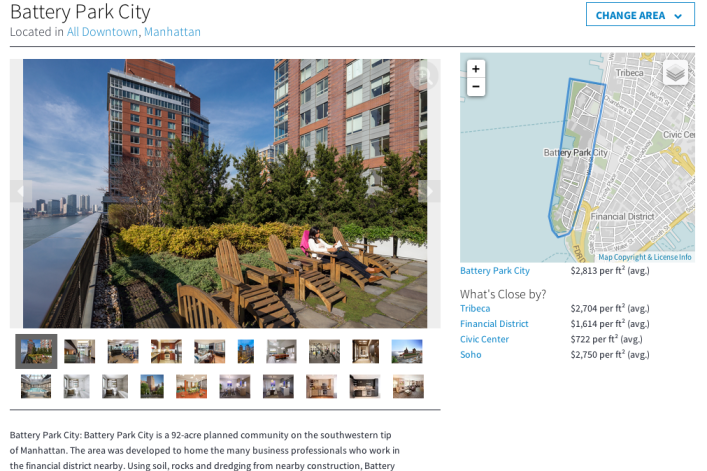When numbers collide: Why Zillow, StreetEasy and Trulia don't agree on apartment prices

If you're like us, you skipped out of your last high school math class and breathed a sigh of relief. Unfortunately, the process of buying or selling an apartment will bring you right back to that classroom, between figuring out a fair price tag for your condo, deciding whether that co-op is overpriced, or simply determining whether you can afford a neighborhood.
There's another problem. Real estate listings sites are awash in data, and yet if you look at StreetEasy, Trulia and Zillow—arguably the Big Three portals—you'll find “wildly divergent” numbers, notes Constantine Valhouli, a principal at the Hammersmith Group, a consulting firm that focuses on real estate and market analysis, among other things. (Valhouli is also the guy who created a map of New York City based on geographic-themed songs.)
Recently, he was looking up the price per square foot of apartments in different neighborhoods and noticed a pretty big discrepancy between the three sites. For example, in Battery Park City, the price per square foot ranged from $1,057 on Trulia to $2,829 on StreetEasy to $1,250 on Zillow (which owns StreetEasy and is in the process of acquiring Trulia). (As of today, the numbers are $1,034 on Trulia, $1,314 on StreetEasy and $1,250 on Zillow.)
“This is a starting point for a lot of other assumptions about neighborhood performance and housing appreciation—and whether or not something is a decent investment, and if a particular property is undervalued or overvalued relative to the neighborhood,” notes Valhouli.

Real estate observer Constantine Valhouli compiled this chart based on prices per square foot on three different listings portals.
The reason for the disparity? Each site relies on somewhat different criteria to collect their stats. And while they’re all arguably useful numbers for the average buyer, each one is going to tell you something a little different—and you want to be sure you’re understanding what they’re telling you.
- Zillow, for example, uses the median listing price—that is, the asking price smack dab in the middle of all the other apartments on the market. Relying on a median rather than an average is useful because you aren't counting prices that are way high or way low. But listing prices merely demonstrate what a seller hopes to get for an apartment—not necessarily what a buyer will pay. So you may not be getting a real picture of the value of homes available in a given neighborhood.
- On Trulia, the number is based on an average of recorded sales—deals that have been finalized and filed in property records—on a rolling three-month average, in this case based on sales from May to August. While using sale prices rather than asking prices will give you a better sense of how much apartments are actually selling for—as opposed to what sellers wish they’d sell for—averages incorporate outlier deals as well, so a handful of extremely pricey sales could artificially inflate the number. Likewise, the three-month rolling average will give you recent data, but it still might not be timely. As data guru Jonathan Miller has noted, “there is a significant lag time from a meeting of the minds between a buyer and a seller to when the sale gets reported to the public.”
- StreetEasy, meanwhile, calculates the figure using an average of all active resale listings; in plain English, that’s listings on the site minus the ones in new developments. Since newly constructed apartments tend to sell for more than existing ones, StreetEasy removes them from the data sample to provide a more “apples to apples” comparison, a rep for the company explains. However, if you’re looking for a brand new condo, this metric probably won’t be the most enlightening, and you're also going to be looking at asking prices, rather than sale prices.
It’s worth noting that all three of these portals use lots of different metrics throughout their sites, as well as in their various market reports. But either way, know what you're looking at and don't base your view of an area's prices based on a single number.
Related:
Your apartment hunt, now with more (and more) data!
Zillow continues on path of world domination, but what does it mean?























